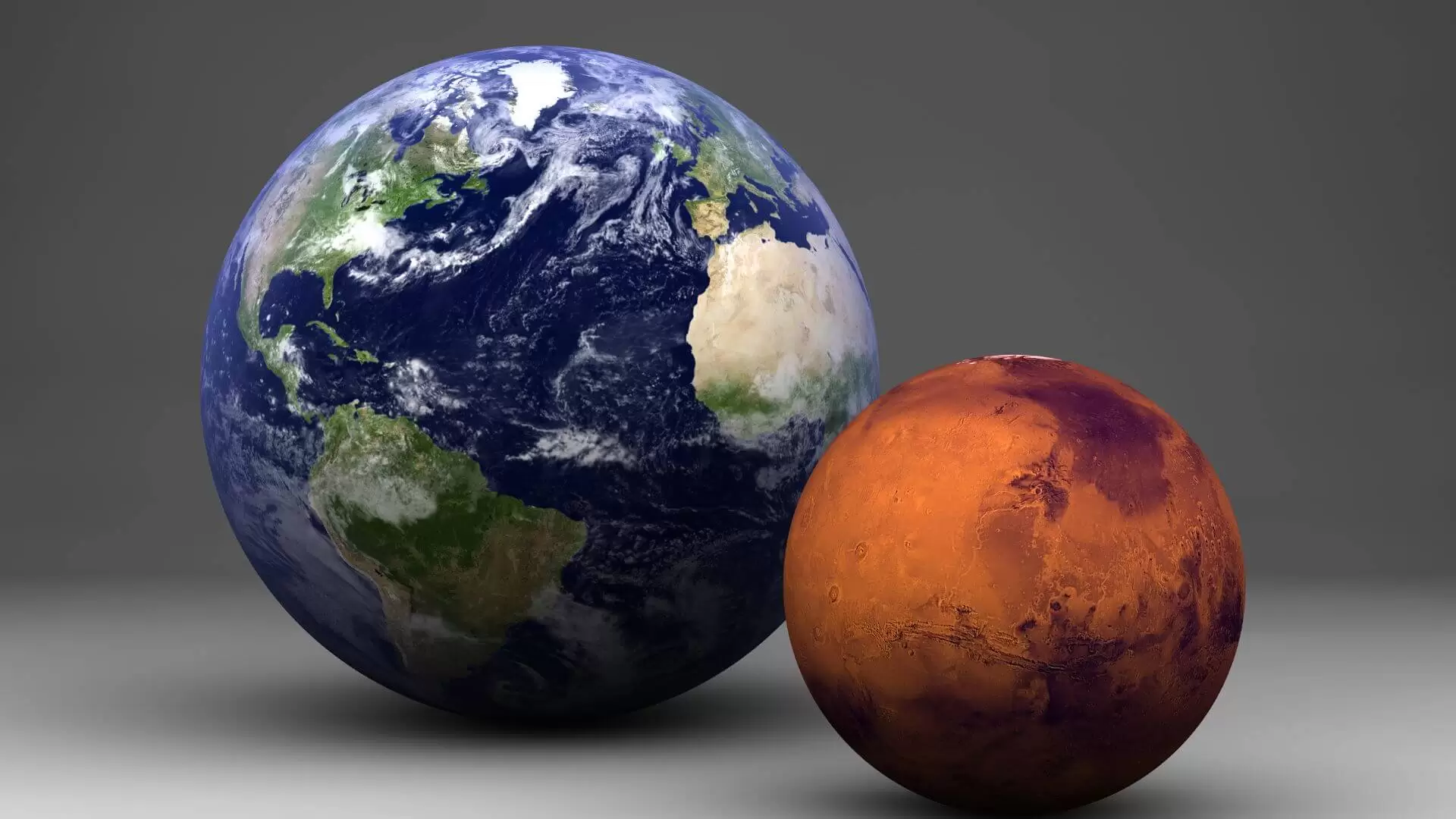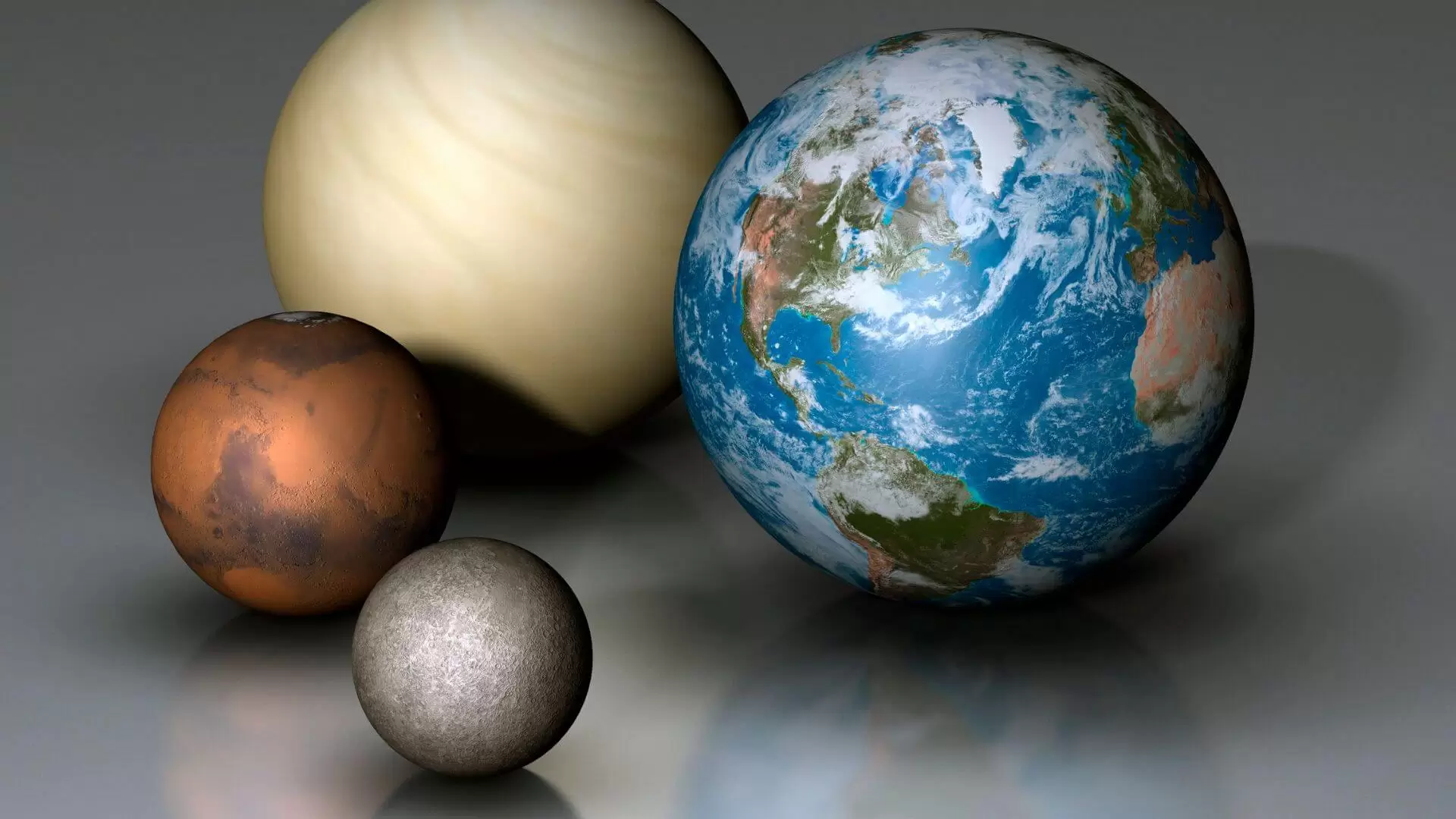Until now there was a debate between two theories: one that proposed that the rocky planets originated from material from the inner Solar System; and a more recent one that pointed to fragments of the outer Solar System
About 4.6 billion years ago, in the early days of our Solar System, a disk of dust and gases orbited the young Sun. Humanity has come up with two theories as to how the rocky planets, including our home, arose from that cloud. the Earth. The first notes that dust in the inner Solar System – the region of our cosmic neighborhood stretching from our star to the orbit of Jupiter – has clumped together into ever-larger chunks, about the size of our Moon. In a chaotic ‘dance’, those bodies collided with each other, merging into what we know today as Mercury, Venus, Earth, and Mars.
But in time, a more modern alternative hypothesis was proposed that suggested the process was different: millimeter-sized dust ‘ pebbles ‘ migrated from the outer Solar System towards the Sun.
On their way, they accumulated in the rocky planetary embryos, expanding in size to what they are today. Both ideas about what the early Solar System was like and how the inner planets formed are based on strong theoretical models and computer simulations, but which is correct? What really happened?
Now, a study published in ‘ Science Advances bets with new data on the oldest theory by which planets like Earth and Mars were formed mostly from material from the inner Solar System, and only a small percentage of the basic components of these two planets originated beyond the orbit of Jupiter. A group of researchers led by the University of Münster (Germany) presents the most comprehensive comparison to date of the isotopic composition of Earth, Mars, and the pristine building material of the inner and outer Solar systems made from meteorites.
To answer these questions in their current study, researchers from the University of Münster, the Observatoire de la Cote d’Azur (France), the California Institute of Technology (USA), the Berlin Museum of Natural History ( Germany), and the Free University of Berlin (Germany) determined the exact composition of the rocky planets Earth and Mars. “We wanted to find out whether the building blocks of Earth and Mars originated in the outer or inner solar system,” says Christoph Burkhardt of the University of Münster and the first author of the study. To do this, they analyzed the isotopes of the rare metals titanium, zirconium, and molybdenum ., found in tiny traces in the silicate-rich outer layers of both planets.
Meteorites for reference
Scientists assume that in the early Solar System these and other metal isotopes were not evenly distributed, but rather that their abundance depended on their distance from the Sun. Therefore, this feature helps determine where they were found during the solar system. its formation, early in the history of our cosmic neighborhood.
As a reference for the original isotopic inventory of the outer and inner Solar systems, the researchers used two types of meteorites: carbonaceous chondrites, which may contain a small percentage of carbon, and which originated beyond the orbit of Jupiter to later move into the belt. of asteroids due to the influence of large gases; and the non-carbonaceous chondrites, true ‘children’ of the inner Solar System. They also took into account the isotopic composition of Earth’s outer rocks and, for the first time, those of Mars as well thanks to fallen meteorites from our neighbor.
The Martian meteorite samples were first pulverized and subjected to a complex chemical pretreatment. Using a multi-collector plasma mass spectrometer at the Institute for Planetology at the University of Münster, the researchers were able to detect small amounts of isotopes of titanium, zirconium, and molybdenum. They then ran computer simulations to calculate the ratio to which the building material found today in carbonaceous and non-carbonaceous chondrites must have been incorporated on Earth and Mars to reproduce their measured compositions. In doing so, they considered two different phases of accretion to explain the different histories of the titanium and zirconium isotopes, as well as the molybdenum isotopes, respectively. Unlike titanium and zirconium,
The researchers’ results show that the outer rock layers of Earth and Mars have little in common with the carbonaceous chondrites of the outer Solar System: they make up only about 4% of the original building blocks of both planets. “If the early Earth and Mars had mainly accumulated dust grains from the outer solar system, this value would have been almost ten times higher,” says Thorsten Kleine of the University of Münster, who is also director of the Max Planck Institute for Solar System Research. site in Gottingen. “Therefore, we cannot confirm this theory of the formation of the inner planets.”
Missing ‘bricks’
However, the composition of Earth and Mars does not exactly match the non-carbonaceous chondrite material either: computer simulations suggest that a different type of building material must have been at play as well. “The isotopic composition of this third type of building material as inferred by our simulations implies that it must have originated in the innermost region of the solar system,” explains Burkhardt. Since bodies so close to the Sun almost never dispersed in the asteroid belt, this material was almost completely absorbed by the inner planets and is therefore not found in meteorites. “It is, so to speak, ‘lost building material’ to which we no longer have direct access today,” says Kleine.
But the surprising finding does not change the consequences of the study for the theory of planet formation. “The fact that Earth and Mars apparently contain mostly material from the inner Solar System fits well with the formation of planets from collisions of large bodies in the inner Solar System,” Burkhardt concludes.


